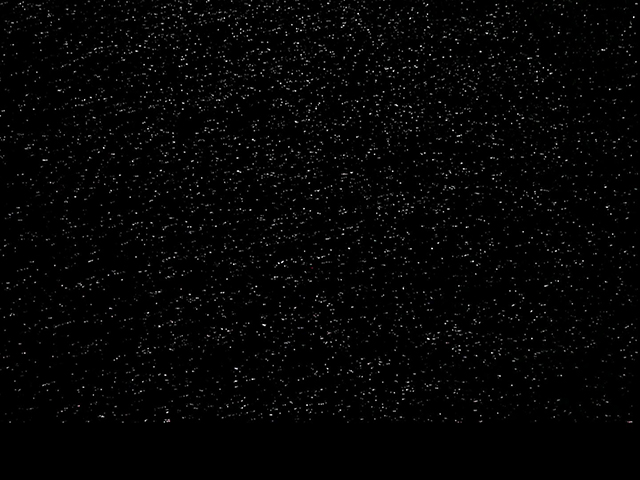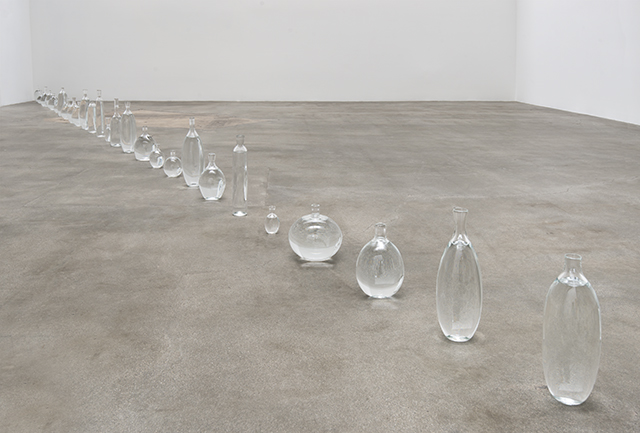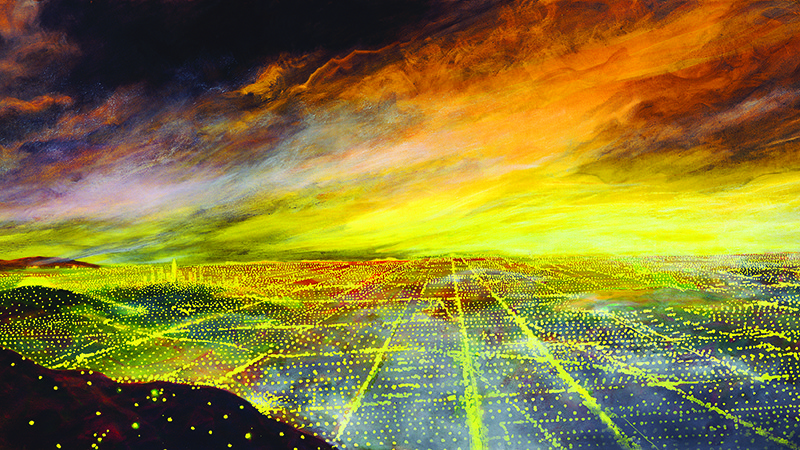From suburbia to Patagonia, the artists and scientists in the Contemporary Jewish Museum’s Night Begins the Day find beauty and awe in unusual places. Across media and via unconventional means, the works create an entwining dialogue linked by the Hebrew word yir’ah, likened to the concept of the sublime.
Viewers are greeted by Peter Alexander’s PA & PE (1990), a nearly 17-foot-long painting of Los Angeles at night. From a hilltop vantage point, the painting looks down on an army of incandescent and neon lights dutifully illuminating the endless metropolis. The cityscape is abstracted and almost pointillist, defined entirely by dots of light. Los Angeles is both anonymous and unmistakable. The night sky, however, is the definition of sublime: grand and romantic, it creates an artificial sunrise of undeniable beauty.

Masood Kamandy also finds beauty, as well as social critique, in the Los Angeles landscape. His video installation, Pools (2011), slowly and silently flies over the city. The still landscape is dark except for the countless swimming pools, private urban oases, highlighted against the surrounding darkness. These pools are similar to the thousands of shimmering specks in Lisa K. Blatt’s video clearest lake in the world (2012). Shot at a remote lake in Patagonia, the piece documents our galaxy as it is mirrored by a pristine lake in a locale without noise or light pollution.
Three mesmerizing gelatin silver photograms by Klea McKenna capture traces of falling rain. During nighttime downpours in Hawaii, McKenna laid out light-sensitive paper and then spotlit its surface, freezing that moment in a direct exposure. Biased by our digital age, the photograms at first seem to be high-definition digital images of water, instead of unique analog records of a particular patch of rainfall.

Rather than using a snapshot of time to represent water, David Horvitz uses water to try to take hold of time itself. For somewhere in between the jurisdiction of time (2014), Horvitz traveled to longitude 127.5° W by boat. Straddling the theoretical frontier between Pacific Standard Time and Alaska Standard Time, Horvitz drew up buckets of water, precariously installed at the CJM in 32 glass vessels on the museum floor. Horvitz’s task is impossible — to grab hold of a fleeting moment on an arbitrary boundary — but poetic. The installation transports the viewer to the moment of excavation, smelling the salty air as the unshaded sun beats down.


